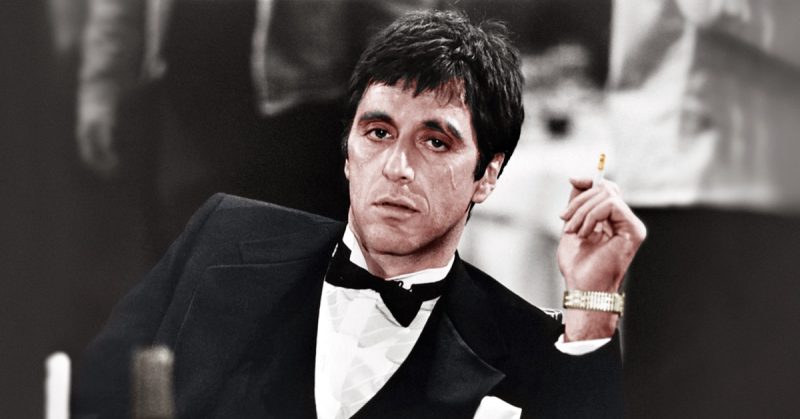When a film named Scarface was released on December 11, 1983, it didn’t make much money at the box office — barely $5 million the first weekend — and the reviews were terrible.
Pauline Kael of The New Yorker called it “a long druggy spectacle…manic yet exhausting.” Rex Reed said, “Noisy, grim. Ultimately, it makes you feel mugged.”
Vincent Canby of The New York Times wrote, “Mr. De Palma never understates anything when overstatement would work better.”
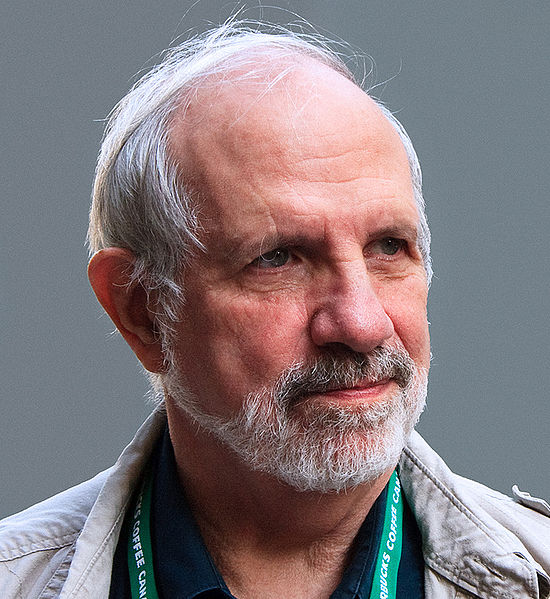
The studio was horrified the film failed, and the director, Brian De Palma, was depressed. The star of the film, Al Pacino, was simply stunned.
“I frankly couldn’t understand it,” Pacino said in a later interview.
However, the film did better in Europe and the Middle East than in America. Then came video and cable TV. Pacino noticed in the 1990s he was receiving more residual checks for Scarface. Whenever he was filming in Europe, people would come up and say, “Hey, Tony Montana!”
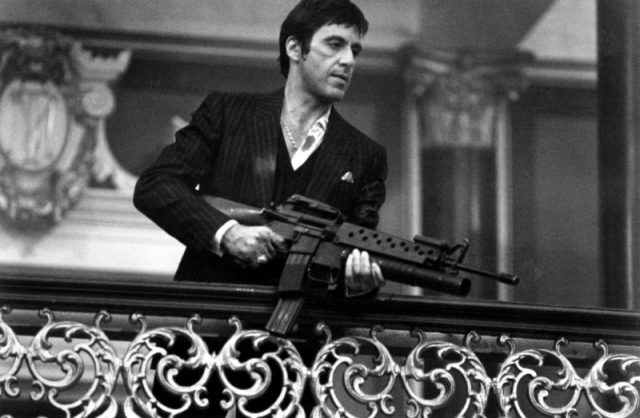
Rap musicians took to the film. According to DuJour magazine, in 2003, Sean “Diddy” Combs said he’d seen the movie 63 times. Rapper Trick Daddy put Venetian blinds with Tony Montana’s face on them over his bed, and the band Blink 182 claimed it took its name from the number of times Pacino’s character says the “f” word in the film. Hip-hop stars wanted their mansions and even their weddings to look like Tony Montana’s.
By the year 2000, wherever Pacino went in America, he’d hear, “Say hello to my little friend!” and “Don’t get high on your own supply.” Scarface had become a pop-culture phenomenon.
It took 20 years for Scarface to become one of the most-watched films of all time — and then it remained popular. There are video games and serious books analyzing its meaning. Tributes range from comic books to posters.
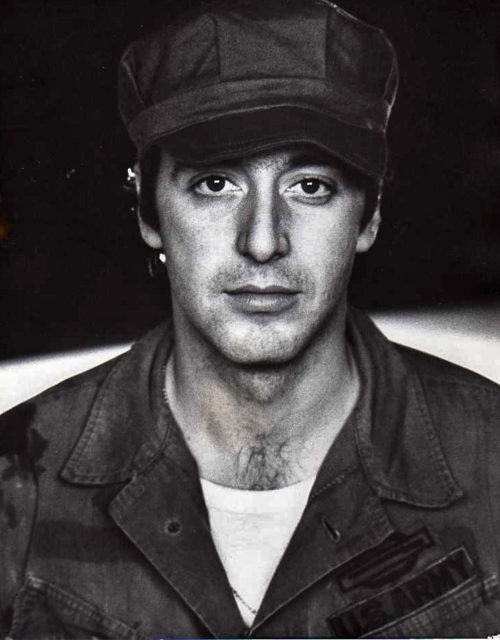
It all began with Pacino, who, while growing up in the South Bronx, liked watching gangster movies. His grandfather’s favorite was Scarface, starring Paul Muni, set in Chicago during Prohibition.
After the success of the Godfather movies, Serpico, and Dog Day Afternoon, Pacino had the idea to remake it. Producer Martin Bregman shepherded the production. His first choice was Oliver Stone to write the screenplay.
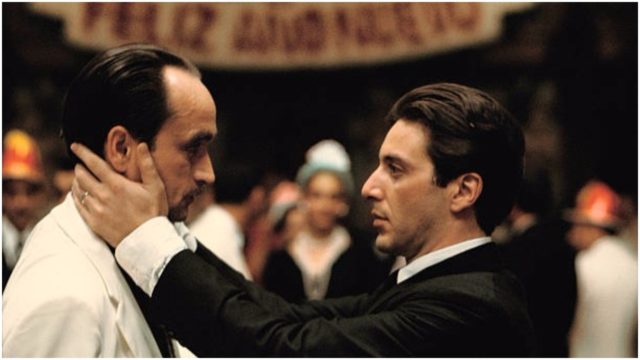
At first Stone wasn’t enthusiastic about the project, until they decided to radically change the setting and circumstances.
In 1980 the Marielitos were big news. Cuba’s Fidel Castro opened the port of Mariel to anyone who wanted to leave. Within months, 125,000 Cubans landed in South Florida crammed into some 3,000 boats, and among the decent, hardworking Cuban families were thousands of criminals.
To make this a South Florida story of Cuban drug lords importing cocaine from South America, Stone did intense research. He met street hustlers and cops, and met with the U.S. attorney general in Miami.
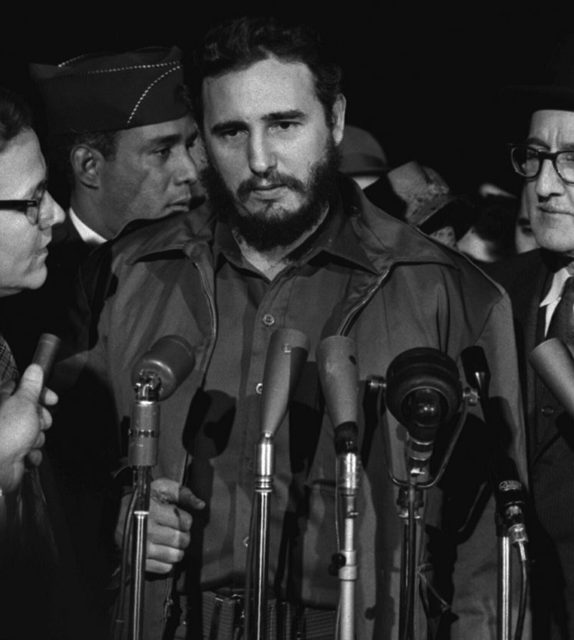
Stone said in an interview, “When the U.S. attorney general told us cocaine was a hundred-billion-dollar-a-year industry, I thought I hadn’t heard right. ‘One hundred million dollars?’ I repeated. ‘No,’ he corrected me. ‘One hundred billion.’ ”
The infamous chainsaw-murder scene in a Miami Beach hotel was based on Stone’s research. “Colombians did use chainsaws,” Stone said later. “They would kill entire families of drug pushers if they informed. Colombians were the most secretive.”
Stone then traveled to Peru and Ecuador. “It was scary; my life was on the line.” Most of his research took place after midnight and lasted until dawn: “That’s not a very safe time to be out alone when you’re dealing with guys who might have second thoughts about you after they decide they might have told you too much.”
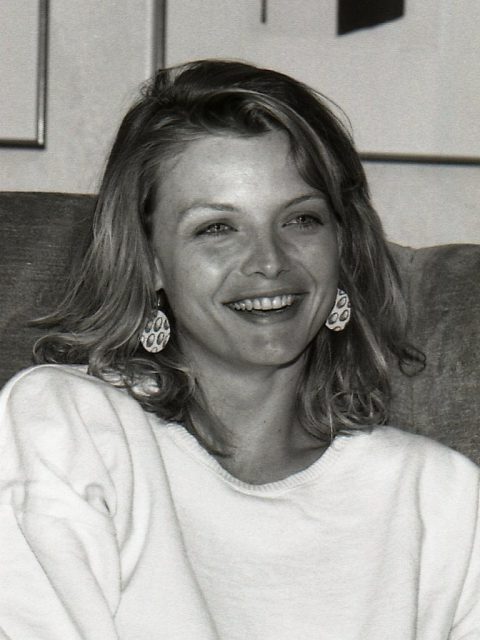
The film was cast with Stephen Bauer, Michelle Pfeiffer, Robert Loggia, F. Murray Abraham, Mary Elizabeth Mastrantonio, and Harris Yulin. But when they tried to shoot scenes in South Florida, there were huge problems almost immediately.
Opposition to the project was fierce among the Cuban community in Miami. According to Bregman, no matter how much he argued that many Cubans would be employed in the production and that the movie wasn’t all negative, the locals were against him. Bregman said later he was physically threatened and hired a bodyguard armed with a machine gun.
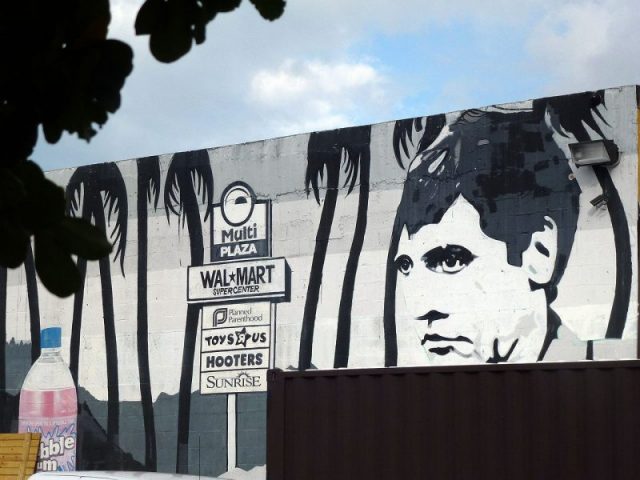
The last straw came when a Miami city commissioner demanded that the script be changed to make Pacino’s drug lord a spy sent by Fidel Castro to corrupt America, according to DuJour magazine.
The production had to be moved to Los Angeles. The refugee internment camp underneath the Miami freeway was re-created between the intersection of the Santa Monica and the Harbor freeways. Scenes set in Miami’s Little Havana were shot instead in L.A.’s Little Tokyo. The crew had to erect storefronts and Spanish-language billboards and use a mural of the Miami skyline.
In the last weeks, in spite of death threats, the cast and crew snuck back to Florida and shot the last scenes, in which Tony, high on coke, has a spectacular shoot-out with a Bolivian hit squad.
De Palma has a theory as to why the film he directed became a classic. “Tony Montana is the antihero contemporary kids identify with,” says the director. “He’s about greed and power and self-destruction in the land of opportunity, unfettered by morality.”
Read another story from us: Ultimate Monster Mash: ‘Godzilla vs. Kong’ set for Big Screen Release
Pacino said: “Brian thought of it as an opera, and so did I. An opera in the Brechtian sense, with an exaggerated sense of style. What you see is what you get — that was the idea. It wasn’t about why he dies but what he does, period.”
“Tony Montana,” added Pacino, “was never meant to be reflective.”
